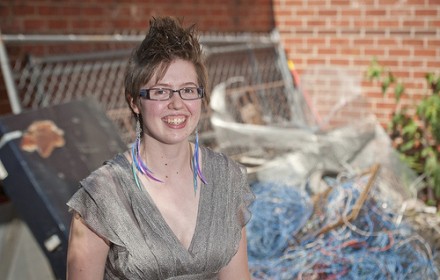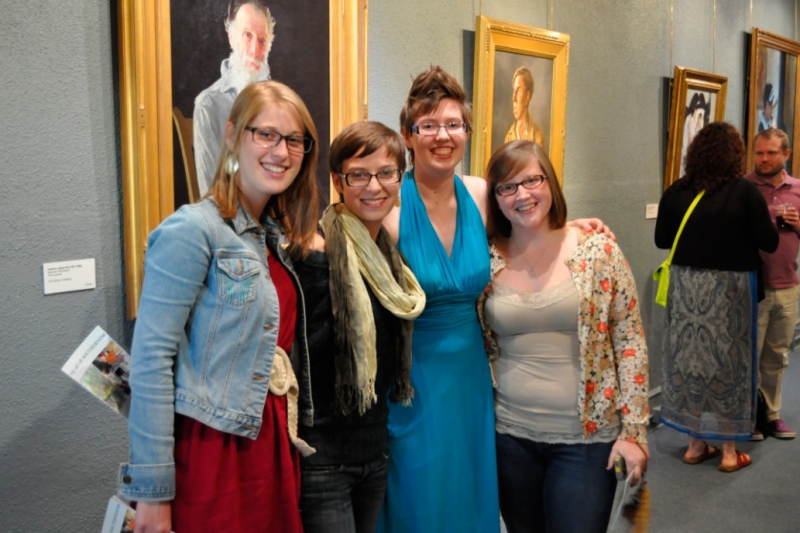Bailey Szustak ’13: Intern, Art Curator, Philosopher

Bailey Szustak ‘13, a philosophy and studio art major with a minor in art history, completed an internship with the Johnson Collection, a Spartanburg-based collection of historical and contemporary art from or inspired by the American South. You might expect that her internship focused on art history, but instead, it was a philosophy course. She curated a show, developed an exhibition catalogue, and presented a gallery talk in conjunction with Converse’s 2012 Southern Culture Conference. The exhibition was entitled “The Art of Southernness,” and showcased a selection of artworks chosen to facilitate philosophical reflection on Southern art, culture, and identity.
Art and Philosophy
An art museum internship seems like an odd choice for a philosophy major, but Bailey thought it would be a “really interesting and unique opportunity to combine all of my areas of study, and to approach both philosophy and art from a different angle of entry.
“It forced me to think about subjects that were familiar to me in a completely different manner, and that was a challenge I couldn’t pass up.”
“My focus in philosophy is aesthetics, the philosophy of art, but it is rare to be able to interact with and focus on specific works of art versus ‘Art’ as a whole. It forced me to think about subjects that were familiar to me in a completely different manner, and that was a challenge I couldn’t pass up.” “Some of the skills that I honed in my philosophy classes that helped me with this project included the ability to approach an idea from multiple angles, learning to continually ask new questions, and learning how to allow myself to be led from what I had perceived as Fact to a new understanding, even when it raises more questions than answers.”
Juggling Interdisciplinary Priorities
“The process of researching and developing my exhibit required a constant balance between the art-historical and philosophical aspects of the project. To start, I had to explore the paintings that the Johnson Collection had available for the exhibit, and start deciding what I liked, what I didn’t like, and whether there was a certain theme that jumped out at me. At the same time, I was reading works by multiple philosophers on art and culture, and using both at once to try and decide on a topic.”

“Once I had a general idea in mind, I then had to narrow down what artworks I wanted to use or thought might fit, narrow down philosophical concepts and theories in the same way, and start developing a structure for my concept. Then, with a thesis and outline in mind, and a selection of about 40 artworks to start, I began writing the exhibition catalogue, which involved a lot of drafts, back and forth editing between me, my collection supervisor, and my philosophy advisor, and more research and reading as I was led down new paths by my research. I also had to narrow the works of art down to about 25. At the tail end of writing the paper was titling it, which was nearly the most arduous part of the whole process. Once I (finally!) had my paper written, I then designed the exhibition catalogue, installed the paintings in the gallery, wrote my gallery talk, gave my talk, and then gave a great big exhale of relief.”